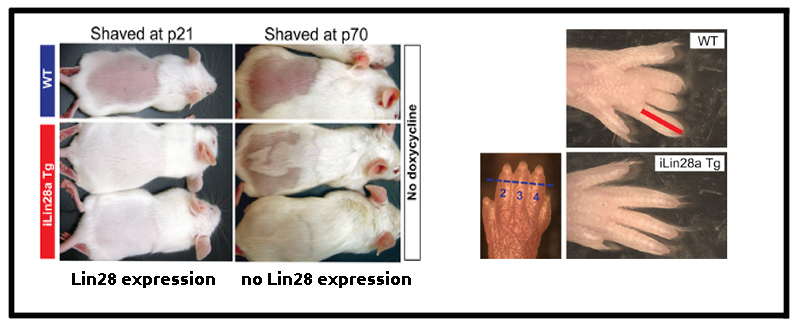Enhanced adult tissue repair by Lin28 reprogramming
November 11, 2013
In the animal kingdom, barring a few special species, regenerative capacity declines with age. The exact mechanism of enhanced tissue repair in juveniles and the cause for its decline is under debate. However, a recent study by Shyh-Chang, et al., shows that expressing a critically important embryogenesis specific RNA-binding protein, Lin28a, in an adult mouse stimulates cellular metabolic pathways, and enhanced regeneration of: hair, cartilage, bone, and mesenchyme after induced injuries.
Using an inducible Lin28a mouse model, they reactivated Lin28a expression post injury. Lin28a expression, and not its repression of other effectors, was responsible for mRNA translation of metabolic enzymes and the increase of cellular glycolysis and oxidative phosphorylation (OxPhos). This report reveals a novel application of Lin28a for in vivo tissue repair through ehancement of cellular metabolism.
Stressful beginnings for creating iPS cells
January 31, 2014
In early 2002, the majority of the science community did not believe in programming cells to a pluripotent state. In 2006, the Yamanaka group revealed a novel method of reprogramming cells to a pluripotent state using defined transcription factors. Yamanaka’s discovery spawned a new field of research and in the subsequent years, numerous improved methods of with increased efficiency and amenability to therapeutic applications have been published. However, the creation of iPS cells all required use of standard molecular biology techniques – lentiviruses or RNA delivery. In this weeks Nature, Obokata et al, describe a newly discovered simplistic method of creating iPS called stimulus-triggered acquisition of pluripotency (STAP). By placing the cells under non-lethal stress, surviving cells react by turning into iPS cells.






